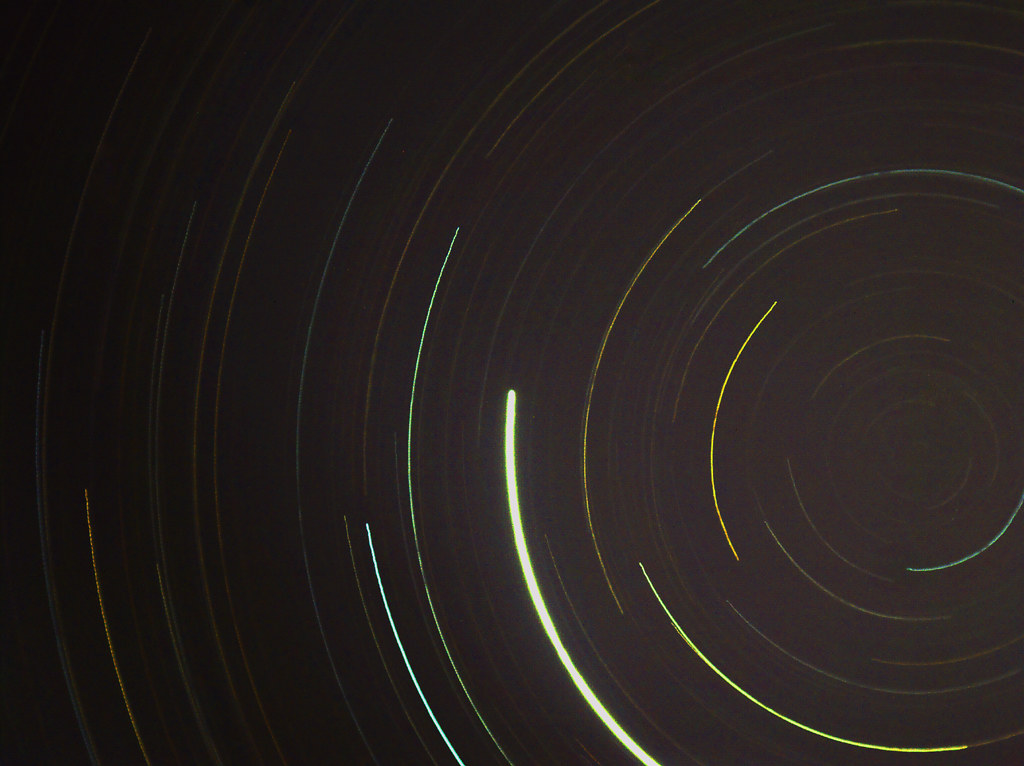These images are created by simply parking your mount in the part of the sky you want to image, and leave it off (no tracking). Run exposures at a consistent length i.e. 30 sec, 60 sec, or whatever. Stack them with "no alignment" and "average". Post process accordingly.
I'll take the opportunity to point out to anyone starting out that this is the reason why polar alignment is so important in DSO imaging. If you drill in on the first shot you can see how much the sky moves in just 60 seconds. In fact, you can see that it moves significantly enough in just 15 seconds (gap between each dot caused by camera download time) and that it's enough to distort or cause trails in your long exposure shots if your alignment and tracking is poor. I used to be one of those who thought "eh, Polaris is close enough" to do a polar alignment. I have corrected that practice in the last year or so. This was also with relatively short focal length imaging (600mm). Imagine how much this rotational effect is multiplied at 2000mm imaging for example. If you're serious about DSO imaging, polar align as best as you can.








No comments:
Post a Comment